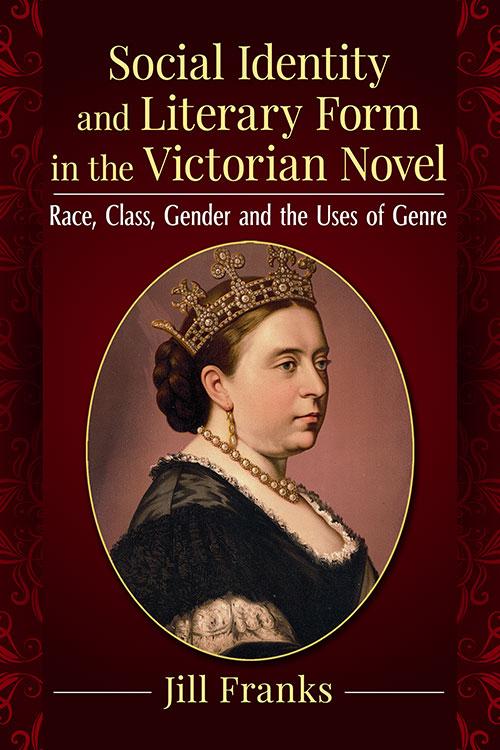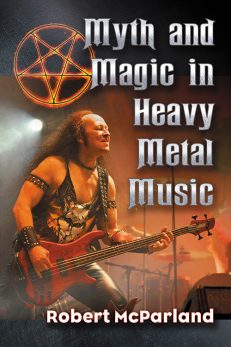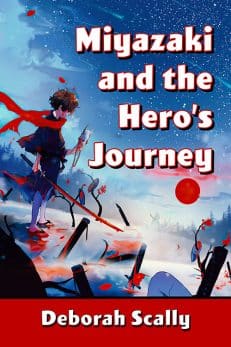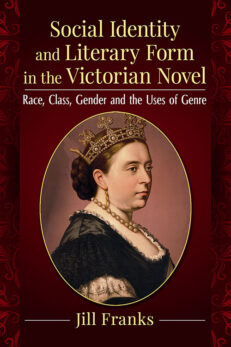Social Identity and Literary Form in the Victorian Novel
Race, Class, Gender and the Uses of Genre
$29.95
In stock
About the Book
Enormous social changes during the Victorian era inspired some of the finest novels in the English language. In the final decades of the century, rigid application of gender rules and class hierarchies began to relax. Consciousness of the injustice of class- and gender-based discrimination was growing. Meanwhile, bias against nonwhite peoples was worsening. The British used scientific racism to justify their relentless expansion in Africa and Asia.
Viewing Victorian literature through the lens of these social changes gives the modern reader a fresh way to interpret the novels and to appreciate their relevance to contemporary issues. Nineteenth-century novelists deployed realism, satire, and the bildungsroman to resist or support leading ideologies of their time, including the separate spheres doctrine and British supremacism. Each chapter is an elaboration of the author’s university lectures about Victorian classics. The tone is scholarly yet conversational, directed to the undergraduate student as well as the general reader or Victoriaphile. The text presents concepts in interdisciplinary cultural studies, discusses the uses of genre for rhetorical and social purposes, and exposes paradoxes of the era. The coherent style, abundant examples, discussion questions, and literary glossary make this book a valuable supplement for readers of the Victorian novel.
About the Author(s)
Bibliographic Details
Jill Franks
Format: softcover (6 x 9)
Pages: 280
Bibliographic Info: 9 photos, glossary, appendices, notes, bibliographies, index
Copyright Date: 2022
pISBN: 978-1-4766-8726-1
eISBN: 978-1-4766-4686-2
Imprint: McFarland
Table of Contents
Preface 1
Introduction—The Victorian Age: Progress and Paradox 9
I. Wuthering Heights (1847)
1. Heathcliff’s Social Climbing 21
2. Masculine Privilege, Absent Mothers, Merging Lovers: Gender Roles and Love Relationships 29
II. Jane Eyre (1847)
3. Judging People by Color, Physiognomy, and Phrenology 35
4. Wide Sargasso Sea—Dark Secrets of the Caribbean: Hatred, Murder, Madness 47
III. Vanity Fair (1848)
5. Race and Empire 55
6. Aporia, Metafiction, and the Narrator 68
IV. North and South (1854)
7. Roman Daughter and Milquetoast Father 75
8. Regional and Class Prejudice 84
V. A Tale of Two Cities (1859)
9. London versus Paris: Is This a Competition? 93
10. Allegory and Personification 99
11. Law and Justice 104
VI. Great Expectations (1861)
12. Little Pip’s Outsized Guilt 111
13. Jack Maggs—Magwitch Writes Back 122
14. Refining Fire and Doppelgänger Devils 135
15. Anti-Semitism, Casual Racism, and Pedagogy 141
VII. Middlemarch (1871)
16. Angel of Destruction or Spacious Mind? 151
17. Mrs. Cadwallader, Busybody 158
18. What Is a Gentleman? 165
19. Dorothea and Lydgate’s Unrealized Potential 170
VIII. Far from the Madding Crowd (1874)
20. Bathsheba’s Feminism 175
21. The Role of the Rustics 182
22. Hardy’s Life and Loves 186
IX. The Strange Case of Dr. Jekyll and Mr. Hyde (1886)
23. Jekyll’s Downfall—Sadism or Repression? 191
24. Dr. Jekyll and Mary Reilly: Abuse, Trauma, and Gender 199
X. Tess of the D’Urbervilles (1891)
25. Hardy’s Modernity and Cosmic Irony 209
26. Pagan versus Christian Values 215
XI. The Odd Women (1893)
27. The Challenge of Writing a Novel of Ideas 221
28. The Skewed Income Scale: Intersections of Gender and Class 228
Appendix A: Discussion Questions 239
Appendix B: Glossary of Literary and Historical Terms 250
Acknowledgments 263
Index 265
Book Reviews & Awards
• “Drawing on history, literature, and intersectionality, Franks has written a book that functions as both an overview of major Victorian novels and an explication of how Victorian values shaped identity. …recommended”—Choice
• “Social Identity and Literary Form in the Victorian Novel is a great teaching text. It provides undergraduates with literary and historical context and with models of how to do literary criticism. It is sure to be useful in the English literature classroom.”—Susie Steinbach, Hamline University
• “Stemming from the unique moment of unprecedented online teaching during the pandemic, Franks’ Social Identity and Literary Form in the Victorian Novel grew out of her patient and comprehensive preparations, and her desire to give students clear, detailed frameworks for thinking about Victorian novels (and some of their more contemporary companion texts). This textbook that focuses on race, class, gender and genre does more than simply frame, however: it offers students, teachers, and lovers of all things Victorian many points of departure for further study, further analysis, and further thinking about these well-known works. In accessible prose and with palpable energy, professor Franks brings us into her classroom, so to speak, and reminds us why reading and interpreting these classic texts still produces crucial questions for us about society, ethics, and human relationships.”—Carrie Rohman, Ph.D., professor of English, Lafayette College





